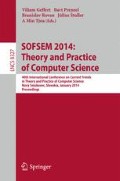Abstract
Most automobile manufacturers maintain many vehicle types to keep a successful position on the market. Through the further development all vehicle types gain a diverse amount of new functionality. Additional features have to be supported by the car’s software. For time efficient accomplishment, usually the existing electronic control unit (ECU) code is extended.
In the majority of cases this evolutionary development process is accompanied by a constant decay of the software architecture. This effect known as software erosion leads to an increasing deviation from the requirements specifications. To counteract the erosion it is necessary to continuously restore the architecture in respect of the specification.
Automobile manufacturers cope with the erosion of their ECU software with varying degree of success. Successfully we applied a methodical and structured approach of architecture restoration in the specific case of the brake servo unit (BSU). Software product lines from existing BSU variants were extracted by explicit projection of the architecture variability and decomposition of the original architecture. After initial application, this approach was capable to restore the BSU architecture recurrently.
Access this chapter
Tax calculation will be finalised at checkout
Purchases are for personal use only
Preview
Unable to display preview. Download preview PDF.
References
Andrews, D., Bate, I., Nolte, T., Otero-Perez, C., Petters, S.M.: Impact of embedded systems evolution on rtos use and design. In: 1st International Workshop Operating System Platforms for Embedded Real-Time Applications, OSPERT 2005 (2005)
Bosch, J.: Software architecture: The next step. In: Oquendo, F., Warboys, B.C., Morrison, R. (eds.) EWSA 2004. LNCS, vol. 3047, pp. 194–199. Springer, Heidelberg (2004)
Claraz, D., Kuntz, S., Margull, U., Niemetz, M., Wirrer, G.: Deterministic execution sequence in component based multi-contributor powertrain control systems. In: Embedded Real Time Software and Systems Conference (2012)
Clements, P., Northrop, L.: Software Product Lines: Practices and Patterns. Addison Wesley (2001)
Czarnecki, K., Grünbacher, P., Rabiser, R., Schmid, K., Wäsowski, A.: Cool features and tough decisions: a comparison of variability modeling approaches. In: Proceedings of the Sixth International Workshop on Variability Modeling of Software-Intensive Systems, VaMoS 2012, pp. 173–182. ACM, New York (2012)
Gomaa, H.: Designing Software Product Lines with UML: From Use Cases to Pattern-Based Software Architectures. Addison-Wesley Professional (2004)
Jacobson, I., Griss, M., Jonsson, P.: Software reuse: architecture, process and organization for business success. ACM Press/Addison-Wesley Publishing Co. (1997)
John, I., Dörr, J.: Elicitation of requirements from user documentation. In: Ninth International Workshop on Requirements Engineering: Foundation for Software Quality, REFSQ 2003, Klagenfurt/Velden (2003)
Krueger, C.W.: Introduction to the emerging practice software product line development. Methods & Tools 14, 3–15 (2006)
Perry, D.E., Wolf, A.L.: Foundations for the study of software architecture. ACM SIGSOFT Software Engineering Notes 17(4), 40–52 (1992)
Pretschner, A., Broy, M., Krüger, I.H., Stauner, T.: Software engineering for automotive systems: A roadmap. In: Future of Software Engineering, FOSE 2007 (2007)
Sangiovanni-Vincentelli, A., Di Natale, M.: Embedded system design for automotive applications. Computer 40(10), 42–51 (2007)
Weber, M., Weisbrod, J.: DaimlerChrysler-Research: Requirements engineering in automotive development: Experiences and challenges. In: Proceedings of the IEEE Joint International Conference on Requirements Engineering 2002 (2002)
Author information
Authors and Affiliations
Editor information
Editors and Affiliations
Rights and permissions
Copyright information
© 2014 Springer International Publishing Switzerland
About this paper
Cite this paper
Strasser, A. et al. (2014). Mastering Erosion of Software Architecture in Automotive Software Product Lines. In: Geffert, V., Preneel, B., Rovan, B., Štuller, J., Tjoa, A.M. (eds) SOFSEM 2014: Theory and Practice of Computer Science. SOFSEM 2014. Lecture Notes in Computer Science, vol 8327. Springer, Cham. https://doi.org/10.1007/978-3-319-04298-5_43
Download citation
DOI: https://doi.org/10.1007/978-3-319-04298-5_43
Publisher Name: Springer, Cham
Print ISBN: 978-3-319-04297-8
Online ISBN: 978-3-319-04298-5
eBook Packages: Computer ScienceComputer Science (R0)

